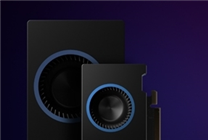Intel’s Ruixuan Pro B50: A Breakthrough in Entry-Level Workstation Graphics
On August 31, Intel’s latest entry-level workstation graphics card, the Ruixuan Pro B50, made its debut in benchmark testing, showcasing its capabilities on platforms like Geekbench. This new addition to Intel’s lineup promises to cater to professionals seeking an efficient entry-level solution for their graphics needs.
Specifications and Architecture
The Ruixuan Pro B50 is centered around the BMG-G21 chip and features 16 Xe2 cores. In terms of architecture, it closely resembles the more powerful Ruixuan B570, which boasts 18 cores. This design signifies Intel’s commitment to providing scalable graphics solutions for different professional workloads.
Benchmark Performance
In the latest benchmark results, the Ruixuan Pro B50 scored an impressive 78,661 points in the Vulkan test and 69,890 points in the OpenCL test. For context, the Ruixuan B570 achieved nearly 100,000 points in Vulkan and over 85,000 points in OpenCL. This indicates that the Pro B50’s performance is approximately 20% to 25% lower when compared to its more robust counterpart, the B570. While this might seem like a trade-off, the Pro B50 offers other compelling features that could cater to its target audience.
Enhanced Memory Capacity
One significant advantage of the Ruixuan Pro B50 lies in its memory capabilities. Equipped with 16GB of GDDR6 video memory and a 256-bit memory width, it surpasses the Ruixuan B570, which has 10GB of video memory and a 160-bit memory width. This enhancement plays a crucial role in managing demanding tasks, particularly in areas such as artificial intelligence and data processing, where higher memory capacity and bandwidth can greatly improve performance.
Advanced Connectivity
The Ruixuan Pro B50 also showcases modern connectivity with the inclusion of the latest PCIe 5.0 interface, as opposed to the previous generation PCIe 4.0. This upgrade not only enhances data transfer speeds but also ensures compatibility with current and future hardware, making it a forward-looking choice for professionals in need of a reliable graphics solution.
Conclusion
While the Ruixuan Pro B50 may not reach the performance heights of its B570 counterpart, its design is tailored for professionals seeking efficiency rather than raw power. The increased memory capacity and advanced PCIe 5.0 connectivity present a compelling argument for those in industries like AI and 3D rendering.
As Intel prepares to reveal official pricing, the Ruixuan Pro B50 is shaping up to be an excellent addition to the entry-level workstation graphics market, providing users with a balance of performance and value. Whether you’re a designer, engineer, or content creator, this card could very well meet your professional demands without breaking the bank.
Stay tuned for more updates on Intel’s offerings as they continue to innovate in the graphic solutions space.





